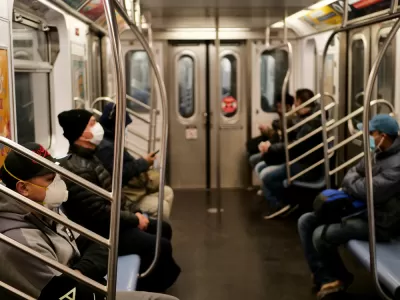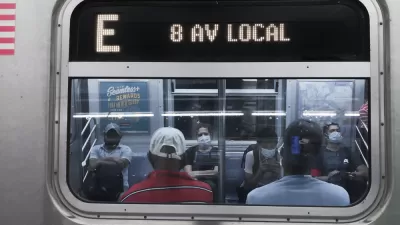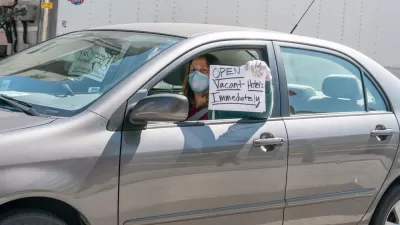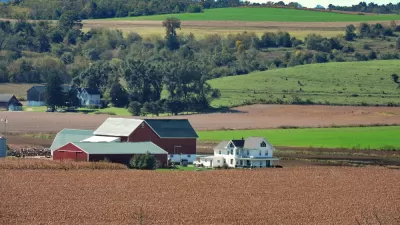There is little evidence that the New York Subway is spreading the coronavirus, according to analysis by Alon Levy.

Alon Levy writes a rebuttal to arguments about the role of the New York Subway in spreading the coronavirus, especially a paper by MIT economist Jeffrey Harris, "claiming that the subways did in fact seed the Covid-19 epidemic in New York." According to Levy, however, Harris cites no evidence in building this argument, and so Levy debunks the paper.
After considering the low infection rates in other high-transit cities worldwide, Levy returns the focus to New York City:
So the question is not whether rapid transit systems are inherently unsafe for riders, which they are not. It’s whether New York, with all of its repeated failings killing tens of workers from exposure to the virus, has an unsafe rapid transit system. Nonetheless, the answer appears to be negative: no evidence exists that the subway is leading to higher infection rates, and the paper does not introduce any.
Levy takes on both of two central claims in the paper—one about infection rates in Manhattan relative to other boroughs and the second about high infection rates in neighborhoods adjacent to subway lines. According to Levy, "neither is even remotely correct."
The details of Levy's counterargument are best left to the source article, which is linked below, although other public health and transit experts also spoke out against the findings of Harris's paper, as evident in an article written by Aaron Gordon for Motherboard.
FULL STORY: The Subway is Probably not Why New York is a Disaster Zone

Study: Maui’s Plan to Convert Vacation Rentals to Long-Term Housing Could Cause Nearly $1 Billion Economic Loss
The plan would reduce visitor accommodation by 25,% resulting in 1,900 jobs lost.

North Texas Transit Leaders Tout Benefits of TOD for Growing Region
At a summit focused on transit-oriented development, policymakers discussed how North Texas’ expanded light rail system can serve as a tool for economic growth.

Using Old Oil and Gas Wells for Green Energy Storage
Penn State researchers have found that repurposing abandoned oil and gas wells for geothermal-assisted compressed-air energy storage can boost efficiency, reduce environmental risks, and support clean energy and job transitions.

Santa Barbara Could Build Housing on County Land
County supervisors moved forward a proposal to build workforce housing on two county-owned parcels.

San Mateo Formally Opposes Freeway Project
The city council will send a letter to Caltrans urging the agency to reconsider a plan to expand the 101 through the city of San Mateo.

A Bronx Community Fights to Have its Voice Heard
After organizing and giving input for decades, the community around the Kingsbridge Armory might actually see it redeveloped — and they want to continue to have a say in how it goes.
Urban Design for Planners 1: Software Tools
This six-course series explores essential urban design concepts using open source software and equips planners with the tools they need to participate fully in the urban design process.
Planning for Universal Design
Learn the tools for implementing Universal Design in planning regulations.
Ascent Environmental
Borough of Carlisle
Institute for Housing and Urban Development Studies (IHS)
City of Grandview
Harvard GSD Executive Education
Toledo-Lucas County Plan Commissions
Salt Lake City
NYU Wagner Graduate School of Public Service





























